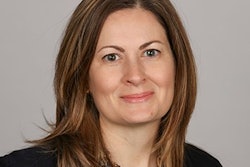Educators are now welcome to gain professional development pertaining to anti-racist practices at George Mason University through the school’s Transformative Teaching cohort program.
 Dr. Elizabeth K. DeMulder
Dr. Elizabeth K. DeMulderThe program’s origins date back to the 1990s, when Dr. Elizabeth DeMulder – currently a professor in the GMU College of Education And Human Development – joined Professor Hugh Sockett’s Institute for Educational Transformation. That version of the program ran from 1991 to 1999, when the institute was incorporated into the college as the Initiatives in Educational Transformation program.
By 2014, the program was converted into a hybrid program – partly online, partly in-person – called “Transformative Teaching,” by DeMulder and her colleagues, Dr. Jenice View and assistant professor Dr. Stacia M. Stribling.
In the wake of the COVID-19 pandemic, the program’s in-person elements became difficult, but online instruction had proved effective, so they decided to move the entire program online. This new version of the Transformative Teaching program begins this summer and is currently taking applications.
The program will begin with two courses this summer and will continue for two years until May 2022.
“It sounds like it’s a new program but it actually has roots in several programs that I’ve been involved in all along, and Stacia’s been involved in most of that time,” DeMulder said. “But it’s considered a new program now. And over the course of that 25 or so years, it became more and more evident to us that we needed to have a stronger focus on social justice and anti-racism in particular.”
The program incorporates the work of Dr. Ibram X. Kendi, author of the bestselling book How to Be an Antiracist, and his conception of anti-racism, DeMulder said.
“It’s a purposeful, intentional way of being in the world,” DeMulder said. “That you’re always looking for ways to unwrap systems and policies and practices to see what kinds of assumptions are involved in there, what kinds of power issues are involved in there and what are the outcomes of those policies and practices. Whose voices are heard? Whose voices are not heard? Who is benefiting? Who isn’t benefitting? Why is that?”
Despite the changes in higher ed and the U.S. that came as a result of the racial justice movements of 2020, DeMulder said the program is not affected.
“I know many people in the world were not as aware of the racial inequities in schools but we’ve been pretty aware of that all along,” DeMulder said. “A lot of people recognize how entrenched institutional inequities and racism are in schools.
“And so, I think what we’re hoping is that, more teachers will recognize the value of our program because of the exposure of all that has been happening that has highlighted the inequities that have been happening all along.”
DeMulder said the coursework shouldn’t be considered as an addition to the work these educators are doing in their classrooms but integrated instead.
“It is designed to be integrally connected to the work they’re doing in their classrooms,” DeMulder said. “We say you can’t be outside of an education environment and be in our program because all of the projects and the teacher research experiences that they engage in are in their classroom and their school. It’s two courses every semester and it’s very teacher-friendly, so we are very aware of what teachers are doing day-to-day and particularly right now, navigating the whole virtual online experience and then probably going back and doing both virtual and face-to-face.
“So we recognize that there’s a lot of stress involved. But there’s also a real need for good professional development for teachers. And we are excited about providing that.”
The program covers a wide range of skills, one being leadership in the classroom setting.
 Dr. Stacia M. Stribling
Dr. Stacia M. Stribling“In the second year, we really start taking those skills and helping teachers build their understanding of their own leadership in the classroom,” Stribling said. “We look at leadership very broadly. Sometimes people think of leadership as a title [and they think], ‘Well I’m not in administration or I’m not principal.’ But the reality is that you can lead from the classroom. And so what does that look like and how do you do it? Part of that is looking at policy issues and then speaking up as a teacher about the things you’re noticing.”
An equity audit is one such effective activity the cohort’s members do. In doing so, they analyze factors such as disproportionality.
“[They consider], ‘How many students in my entire school are students of color? How many students in the gifted program are students of color? Or how many students in special ed program are students of color?’” Stribling said. “And they start to notice these massive inequities and then start looking at the policies the school has in place for placement in some of those programs.
“So, it really grows their skills to think policy in their classroom but also policy in the larger school, policy in the larger school system and the power that they have as teachers who work with students every day to impact and change those policies and drive them in ways that are more equitable.”
The program is meant for educators, but that isn’t limited to the K-12 setting, Stribling said, adding that the previous program has been taken by the likes of charter school deans and museum educators.
“It’s more that you need to be in some sort of educational setting,” Stribling said. “We do not do licensure, so you can’t go through our program to become a teacher. You’ve got to be teaching in some capacity to be able to do the assignments and learn how to be a researcher in whatever teaching and learning context that you’re in.”
And with it now being completely online, educators worldwide can partake.
Arrman can be reached at [email protected]


















